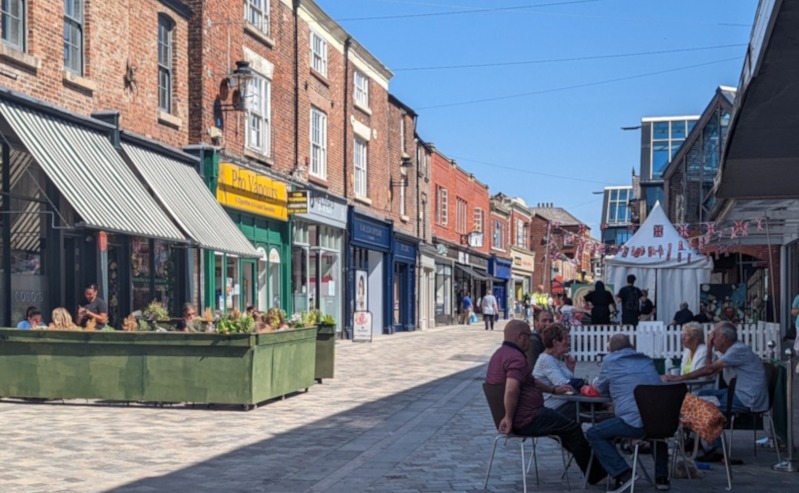
29 Oct How can we make high streets easier to fix, now?
October saw the launch of the Boosting Britain’s High Streets campaign at the Palace of Westminster, and The Assembly Line founder, Diane Cunningham was there.
The campaign has been developed by the Policy Liaison Group for Housing Delivery and Growth. Diane, sits on the steering committee and has contributed to the report, highlighting historic problems with town centre renewal and solutions that reflect the current landscape.
While new funding for neighbourhoods has been announced (Pride in Place funding), for those who were unsuccessful there are still steps that can be taken to regenerate high streets and town centres.
You can read the full report online [here], but below is a flavour of some of the lessons learnt from the past strategies and the policy asks that would shape the approach now.

Does everywhere have a high street?
When we talk about high streets, what do we mean? A twee-looking street from days gone by, a new town precinct, a village parade of shops or a boarded up, forgotten street lost to out of town retail? We mean all of these things running right up to Oxford Street, often referred to as London’s high street.
On that basis, most people will live near to a high street whether that’s in a village, town or city.


How can change be encouraged and supported?
While new funding has been announced (Pride in Place funding), for those who were unsuccessful there are still steps that can be taken to regenerate high streets and town centres, after all they are a key component of a neighbourhood.
You can read the full report online [here], but below is a flavour of some of the lessons learnt from the past strategies and the policy asks that would shape the approach now.
The key is in harnessing the stronger connection people have with their local high street post-COVID-19 and giving more power to them to make changes.
“Rather than waiting for the next retailer to move out and an empty building to appear or for a funding programme to be announced, what if local people were given easier access to ways to change their high street, quickly and at low cost?”
Historic problems for high street regeneration
- Funding for high street regeneration presents several challenges, including the application process and management, should the application be successful.
- Most funding is allocated to capital projects with little to no revenue funding, leading to sustainability issues in the medium to long term.
- While funding can provide a short-term boost, long-term vision and partnerships driven by local people and built on trust are essential. Without voluntary help or local partnerships, efforts to revitalise town centres can collapse.
- Local authorities are often the biggest stakeholders in high street projects, but may not be equipped to work with multiple stakeholders or complex structures. Besides, devolution may introduce new ways of working and new stakeholders which might bring more complexity or less.
- Ideas for high street renewal often rely on past successes rather than forward-thinking solutions. Fresh ideas that complement online shopping are needed
Asks for policymakers
In her article for the report, Diane highlighted five asks for policymakers and provided live examples in London and Merseyside of grassroots change.
The asks included a shift away from a top-down approach to developing and revitalising local high streets and instead giving more support for communities to move plans forward.
Part of that is putting in place mechanisms to make it easier for the community and owners to activate empty buildings. Meanwhile use can help but requires collaboration and planning for ongoing costs. Time will tell if High Street Rental Auctions provide the lever needed to bring buildings back into use.
Funding frameworks attached to regeneration and renewal need to include viable revenue streams with a mandatory framework that has a business/commercial plan attached.
And the age-old problem of the pace of planning has to be addressed so that activation projects can happen more quickly. Similarly, policy needs to enable curation of uses backed by data and local needs.
Finally, there needs to be a greater understanding of the policies on community assets so they can be managed to deliver long-term social value and community engagement.
While funding is welcome (to achieve long-term success), it’s not necessarily the magic wand in delivering high street regeneration. People are proud about where they live (or want to be), so let’s remove the obstacles which stop (positive) change happening.
Diane is joined on the committee by fellow High Street Taskforce alumni with Mark Robinson, former chair and Graham Soult, a retail expert.
Download the full report and read more about the work of PLG online [here]. Keep checking the website for further events and content as the campaign runs over 12 months.


This is our October newsletter where we discuss things we have seen and lessons learnt monthly.
Sign up to The Assembly Line newsletter for urban and place shaping observations.


